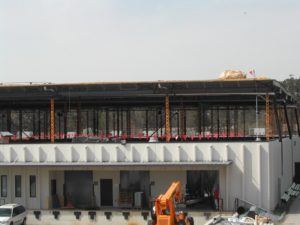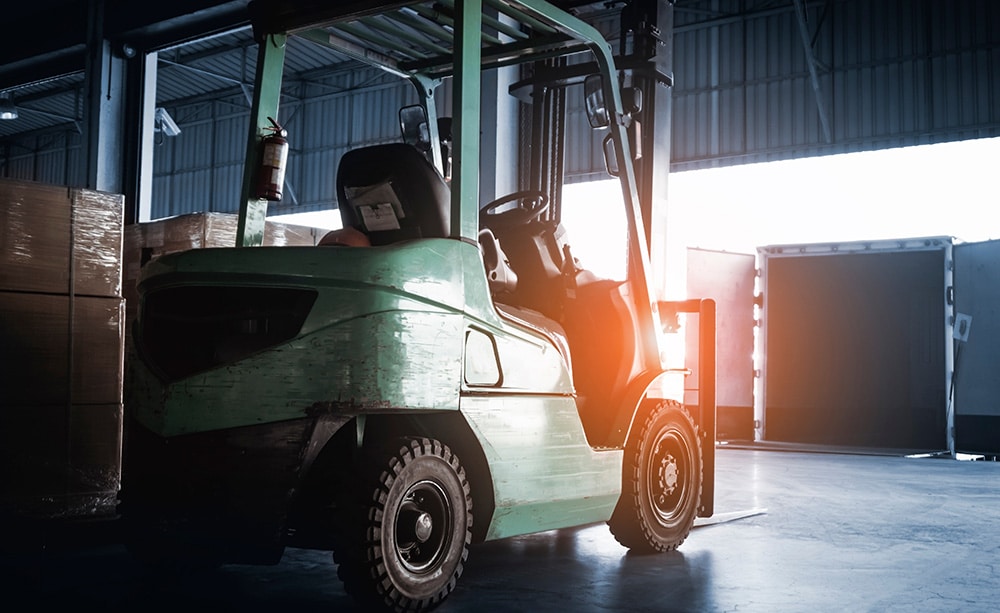There is a building boom of new DCs and rising investment in new order fulfillment and warehouse technology (robotics, automation, mobile technology, etc.). Yet the majority of U.S. warehouses and distribution centers are saddled with legacy systems, processes and infrastructure. Legacy warehouse technology resources create real challenges for warehouse operations:
- Old buildings don’t have the vertical space to support growth (among other issues)
- Legacy warehouse management systems don’t support efficient new order picking and fulfillment processes
- Out of date RF and voice picking devices increase operational and IT risks
Below are some facts and figures that illustrate the challenges facing U.S. warehouses, and strategies for renewing your buildings and legacy warehouse technology.
1. The Average U.S. Warehouse is 34 Years Old
According to CBRE, 70% of US warehouses and distribution centers are more than 30 years old, and in some markets have an average age of more than 50 years. As noted in the report, “Nearly 1 billion sq. ft. of total warehouse inventory is more than 50 years old and has clear heights of less than 20 feet—well below logistics tenant requirements.”

Raising the roof at Augusta Sportswear. Image Courtesy of Rooflifters, Inc.
Renewal Strategy: If you can’t move into a new building, one solution to getting more vertical space is to raise your roof. This is no cure-all, however, so we will continue to see lots of new construction of replacement warehouses, in addition to all-new ecommerce fulfillment centers.
2. Most DCs Operate Legacy Warehouse Management Systems or ERP WMS
A survey last year by Peerless Research Group indicated that 42% of warehouses and DCs are using a basic warehouse management system (including homegrown systems), and 36% are using the warehousing module of their ERP. Only 13% of warehouses surveyed are using a best-of breed warehouse management system. Similarly, 62% of the respondents in that survey said they are using paper-based picking, in whole or in part.
Legacy systems and manual, paper-based processes increase costs and make it extremely difficult for DCs to support the changing order profiles and shorter turn-around times required in today’s ecommerce and omnichannel markets.
Renewal Strategy: Rather than replacing their Warehouse Management System, many DCs are adding new mobile applications and warehouse execution systems on top of their legacy warehouse management systems. Even warehouses with best-in-breed WMS are finding that they need enhanced execution capabilities to improve warehouse operations.
As explained in a previous Lucas blog, warehouse optimization solutions provide more flexible, productive picking and other processes, and they provide real-time visibility tools for warehouse managers that are often lacking in ERP WMS and legacy warehouse management systems.
3. 15 Million RF and Voice Devices Are Nearing End Of Life

End of Service Dates For Warehouse Mobile Devices
Mobile RF barcode scanners and other mobile devices using Windows Mobile and Windows CE operating systems have dominated the supply chain and distribution landscape for the past two decades. According to VDC Research, close to 15 million Windows industrial mobile devices will reach their end of life in 2020 and 2021, when Microsoft ends support for Windows Mobile/CE. This will affect handheld scanners, wearable RF devices, voice-only terminals, and many vehicle mount computers.
Unsupported OSes are susceptible to hackers, among other risks. A new survey by ARC Research indicates that the majority of DCs are planning to move to Android in the next few years, and all of the major industrial device providers are rolling out new Android devices for warehousing and distribution.
Renewal Strategy: The vast majority of devices running Windows cannot be upgraded to a new OS. Instead, most DCs will have to replace the old devices. But it doesn’t end there: you may have to replace the mobile applications running on those devices, too.
Lucas anticipated this as far back as 2012, and we introduced Lucas mobile applications for Android in 2014. Since then, 90% of our new customers have deployed on Android devices, and customers running our software on Windows have a relative easy migration path since Move can run on Windows or Android (smartphones or industrial devices). Many of our older customers are already making the switch to new Android touch computers, like the Zebra TC51.
The good news is that there are immediate ways that DCs can modernize their legacy warehouse technology, systems and processes to compete more effectively. In many cases the new warehouse technology can help you avoid the costs and risks of ripping and replacing what you already have in place. We’d love to hear from you if you are seeking help in updating your order picking or warehouse management systems and technologies.





